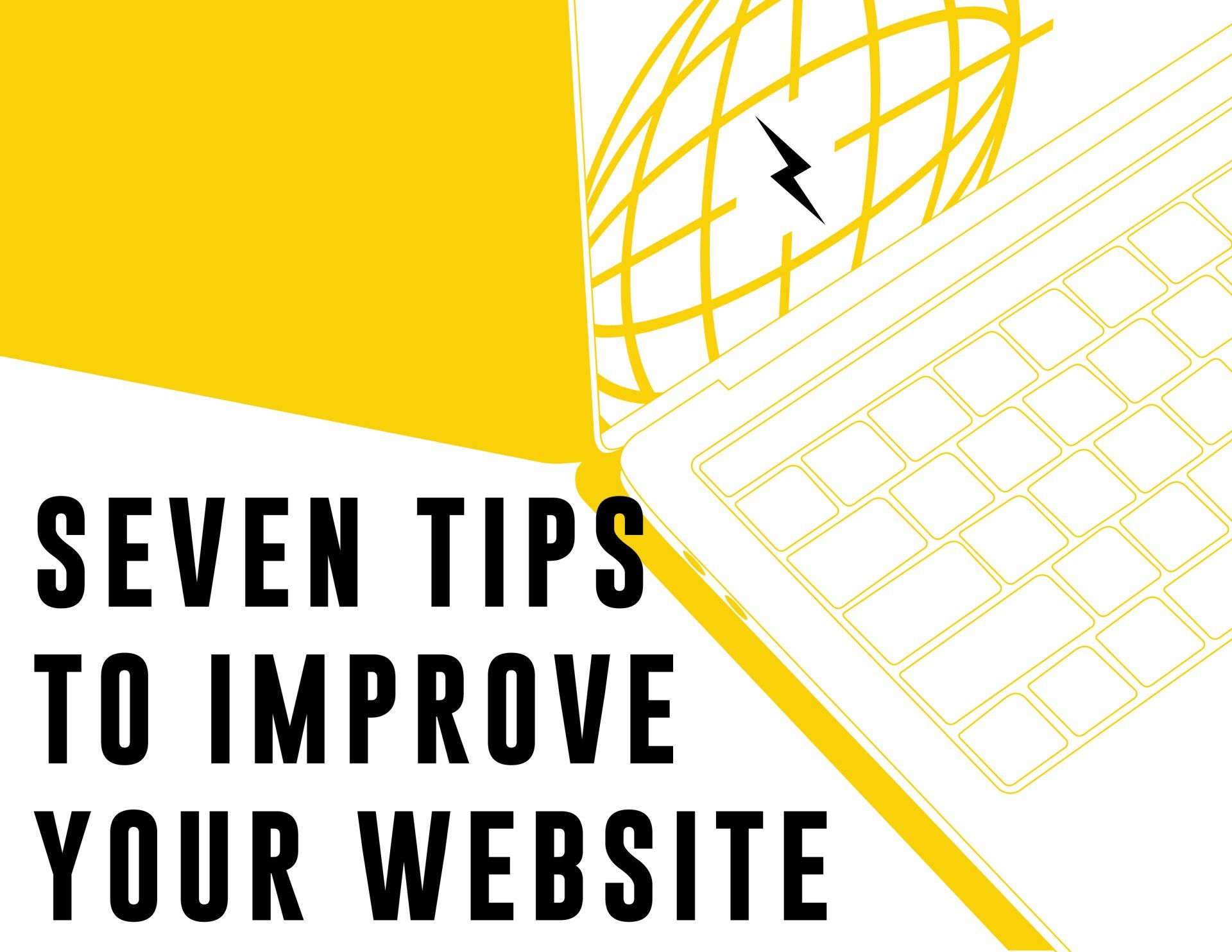Seven Tips To Improve Your Website
Seven Tips To Improve Your Website
In today's world, a website is a must-have. Gone are the days of having an outdated website. If COVID taught us anything, it's that doing business in the digital world is not only possible - it's the future.
What does this mean for your business?
Your website is your digital nucleus. Every touchpoint with customers leads back to your site. Your website is the most powerful digital asset you have, and many people get it wrong.
If you haven't given your website the attention it deserves, then this blog is for you.
1) Design your website with the end-user in mind
Many companies lose sight of their clients when building their sites. If your goal is to get more customers, consider making it easy for clients to contact you or buy your products. The design of your website should be intuitive and user-friendly. Hire a designer that understands how people interact with websites and knows what elements are most important.
2) Know your customer's problems
You must know your customers. If you don’t know them, you don’t know their needs.
You should do everything possible to understand who they are, what problems they have, and how your company can solve them. Having a solid understanding of your customer’s pain is key when it comes time to improving your website conversion rate—it helps you design a more effective homepage, better navigation, and more relevant products and services.
3) Use Native Photo & Video
When somebody lands on your website, you have five seconds: hook them, or they’re likely gone forever. People are browsing sites to see if your business can help them. In these initial five seconds, you want to build trust with them. One way to quickly build trust is by using native photography and video. This validates you in their eyes and builds brand equity. Plus, it just makes the site look way better.
4) Create value-added services
If you want a higher conversion rate, create value-added services for your target audience. If you sell a product that's expensive and difficult to purchase online, consider offering a concierge service where users can call or email you for personal help or consultation before making a final decision. That way, if they end up purchasing from your site, there's less likelihood of buyer's remorse.
5) Build trust with your audience
This one seems simple but is often overlooked. One of your main goals should be to build trust with visitors. Trust leads to sales. Many tactics can help accomplish that goal, including testimonials, client logos, and social proof elements like ratings and reviews. These elements can also make your site seem more trustworthy by giving visitors ways to connect with other customers.
6) Offer clear "Calls To Action."
The hardest part of any website is getting people to take action. Want them to buy something? Need them to call you? How can you encourage visitors to interact with your site? The most effective place to put your call to action is in the top right corner of the site. It also doesn't hurt to sprinkle a few CTA buttons amidst the website copy.
7) Pay Attention to your Conversion Rate
A site that converts well maximizes every possible sale and every possible lead. It's a site that makes it easy for visitors to take action. And, fortunately, improving conversion on your website isn't nearly as difficult as many people assume. In fact, with a few tweaks here and there, you can quickly and significantly improve your conversion rate.
Here’s the takeaway: your website should be a priority no matter what industry you're in. If you invest in a good website, communicate clearly with customers, and always add value- you will be on the road to success.














